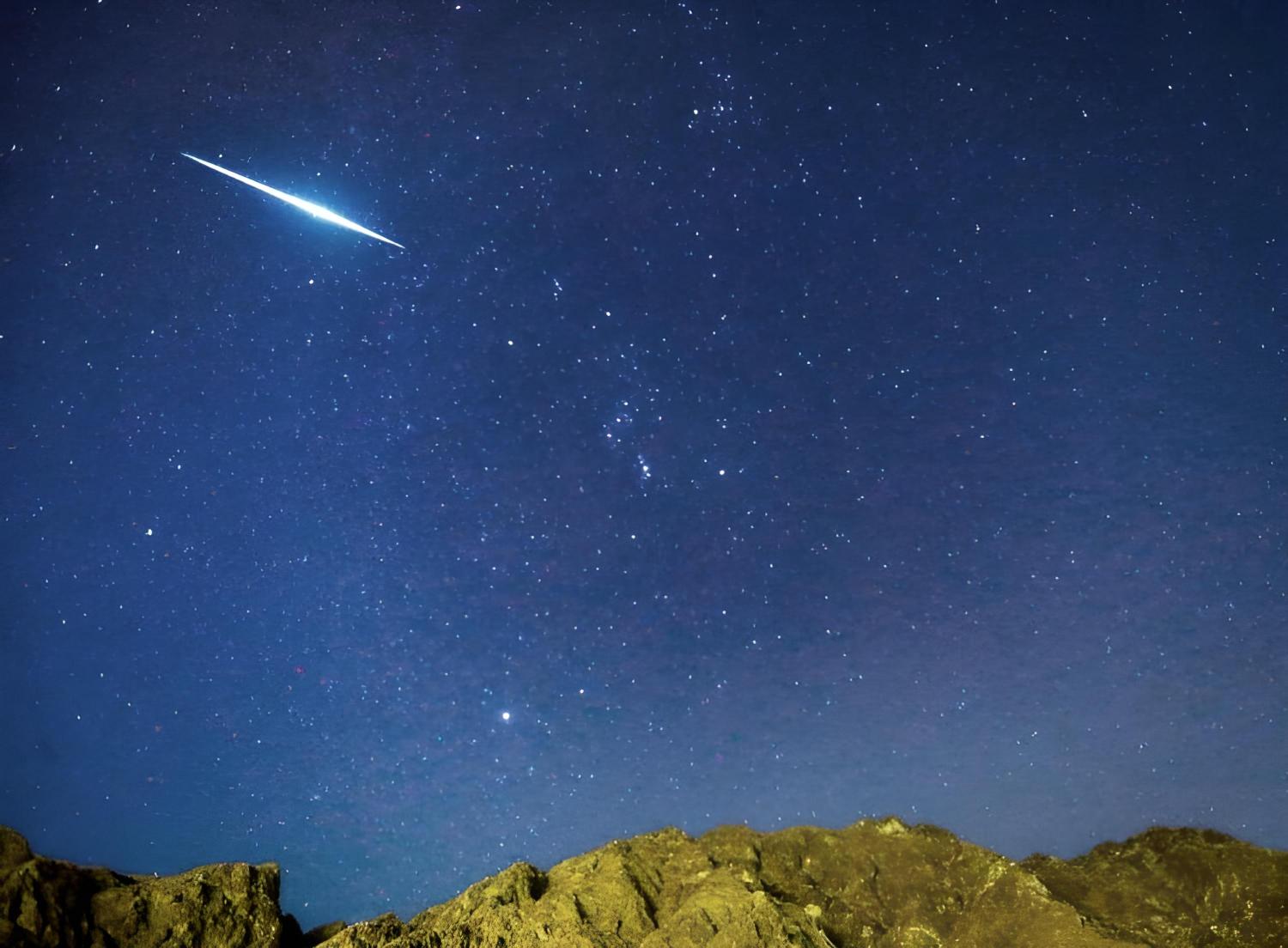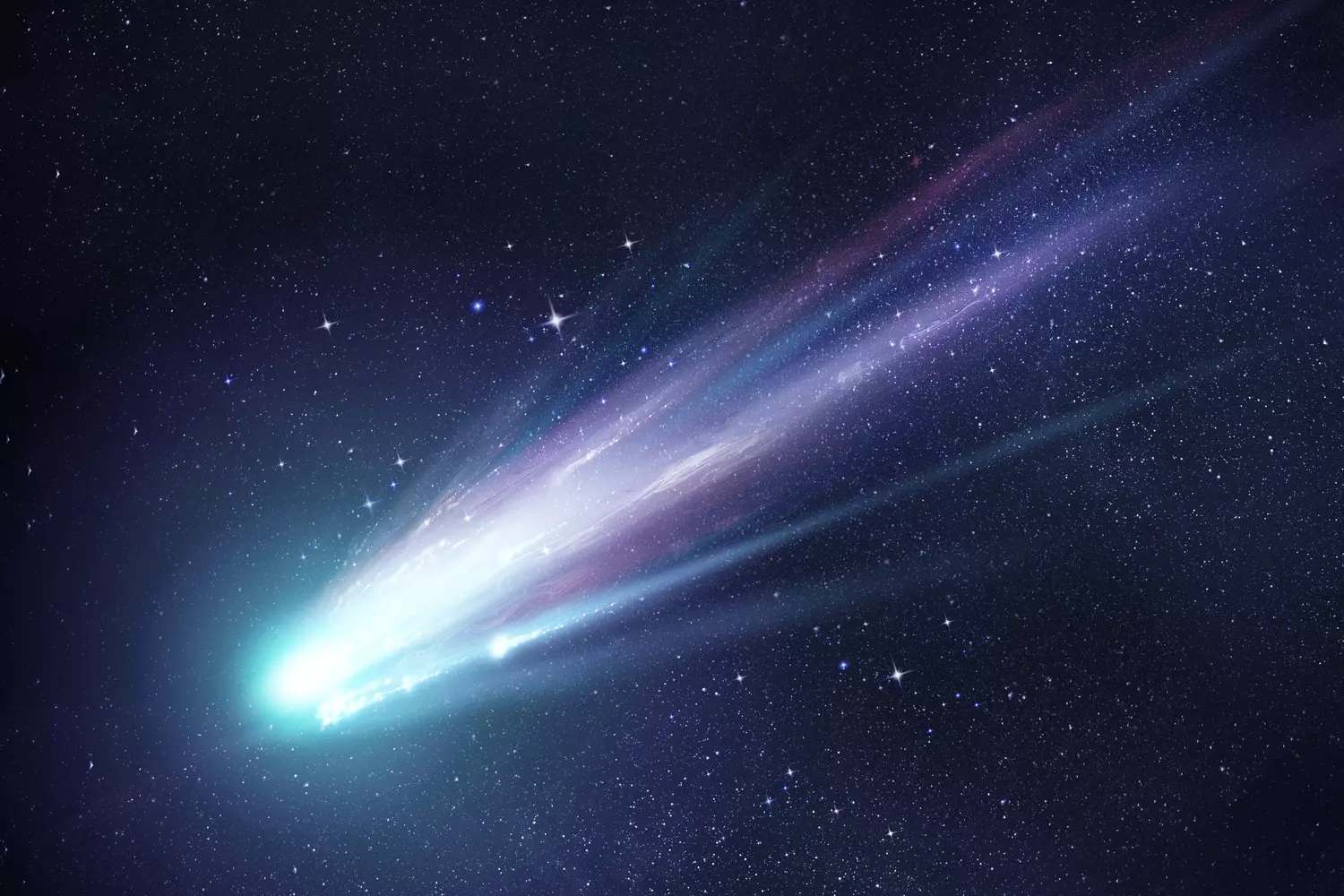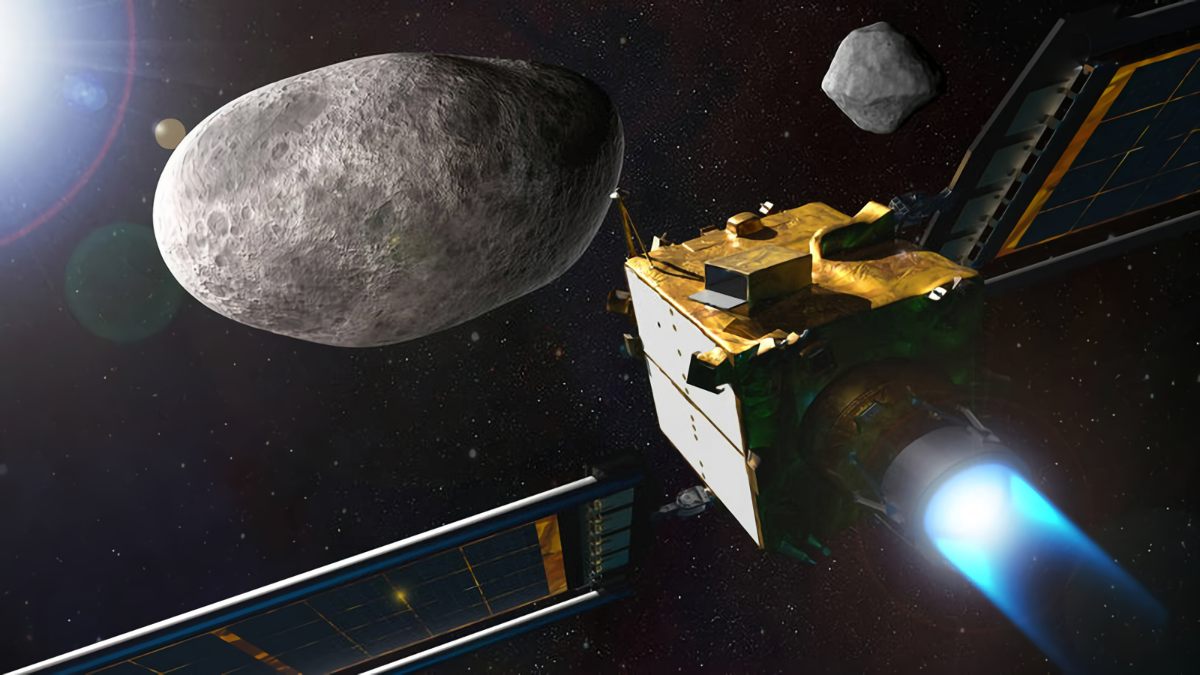Once a year, in December, a meteor shower known as the Geminids appears in the sky. Peak activity occurs on December 13-14, making it one of the most active and consistent meteor showers of the year. The source that causes the Geminids is assumed to originate from the asteroid 3200 Phaethon. The Geminid meteors are often yellow or blue in color, and they are famous for their leisurely, beautiful motion across the sky.
- Key facts about Geminid meteors
- The constant flow of Geminids around the solar system
- Origin of the name “Geminid”
- When is the ideal time to see the Geminid meteor shower?
- Exactly where the Geminids go up in flames
- Where and how can you get the finest view of the Geminids?
- Interesting aspects about the Geminids
- The FAQ about the Geminids
Key facts about Geminid meteors
- The Geminid meteor shower returns to the night sky from December 6–16, 2022.
- The Geminid and Quadrantid meteor showers are significant because they are not generated by comets.
- The night of December 13-14, 2022, is predicted to have the highest concentration of shooting stars.
- Like the Perseids, Delta Aquariids, Arietids, and Eta Aquariids, the Geminids are a yearly meteor shower that disintegrates upon entering Earth’s atmosphere.
- A meteor is the scientific name for any shooting stars. They are flammable space rocks that can be seen by the naked eye.
— Comet, asteroid or meteorite: What are the differences?
The constant flow of Geminids around the solar system
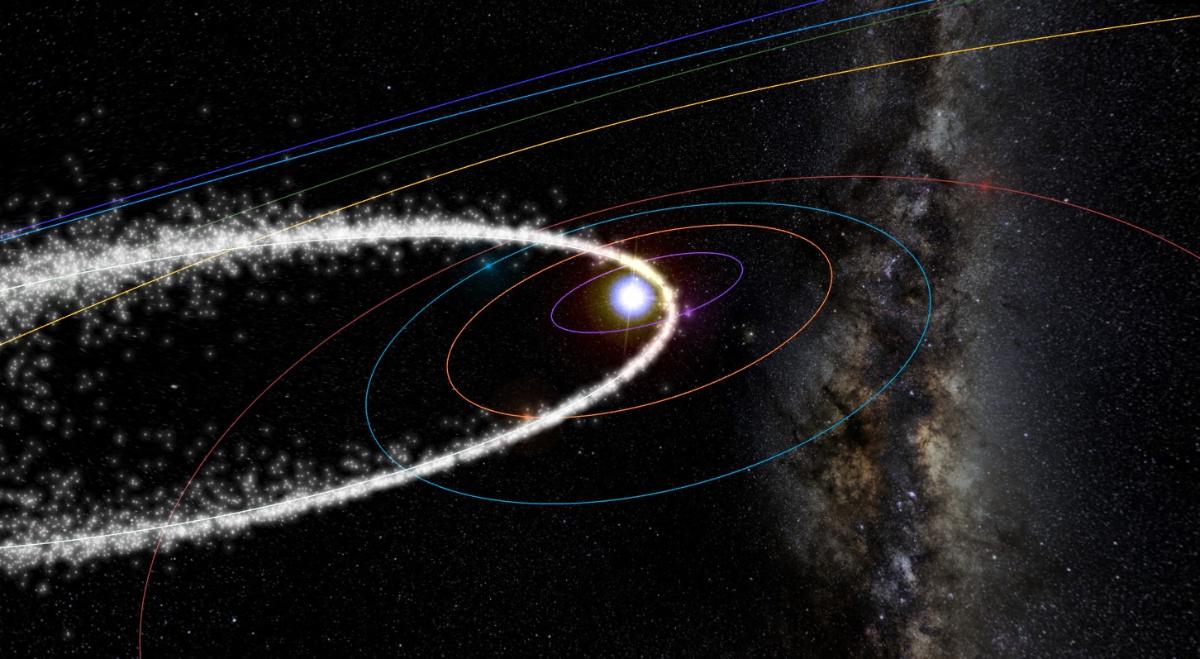
The Earth annually travels through the trail of dust left by the asteroid 3200 Phaethon, which is the origin of the Geminid meteor shower. Here we see Earth (a blue dot on a blue orbit) approaching this line. The 3200 Phaethon asteroid is currently located in the Pisces constellation.
Origin of the name “Geminid”

The twin constellation, or “Gemini” in Latin, seems to be the source of the meteor shower. There, they were dubbed Geminids. However, the Geminid meteor shower does not actually originate from the constellation but from the 3200 Phaethon asteroid. Similarly, the Ursids take their name from a constellation: Ursa Minor, the Little Bear.
When is the ideal time to see the Geminid meteor shower?
- The Geminid meteor shower lasts for 10 days, from December 6th to the 16th.
- The International Meteor Organization predicts that the night of December 13–14 as the greatest night to see the Gemnids. From Tuesday night through Wednesday morning, that’s when the Geminids will be at their visible peak. And the real maximum will be at 1 pm UTC on December 14.
- The sky is pierced by as many as 150 meteors each hour during the shower.
- Bolides, or fireballs, are very bright objects that astronomers anticipate seeing.
Exactly where the Geminids go up in flames
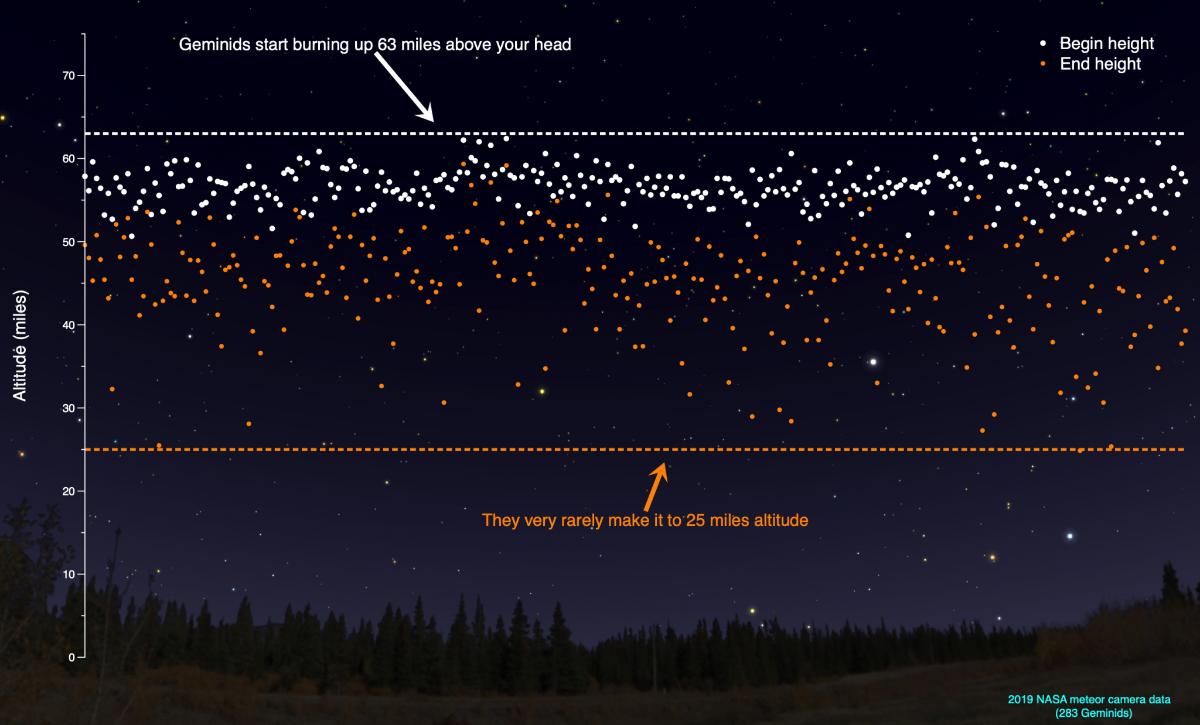
The Geminid meteors reach their maximum height of about 60 miles (100 km) before they explode. This is the boundary between space and Earth’s atmosphere. In most cases, the meteors will not approach within 25 miles (40 km) of our planet.
Where and how can you get the finest view of the Geminids?
Beginning around sunset, this spectacular star shower can be seen. The origin of the meteor shower, the 3200 Phaethon, will still be quite high in the sky. And, because of Earth’s rotation, it won’t begin its ascent until much later. The greatest time to see the Geminid meteors is about 1 pm UTC in 2022, although you may see them all night long.
Away from the city’s bright lights! If you want to see more Geminid meteors, you need to leave the city and get to the countryside, or at least someplace with a black sky. Visibility is diminished by man-made lights like streetlamps and automobile headlights.
Clouds may prevent you from seeing the celestial show, but you can still watch it online in real time. Also, look up at the sky from a height of around 60 degrees.
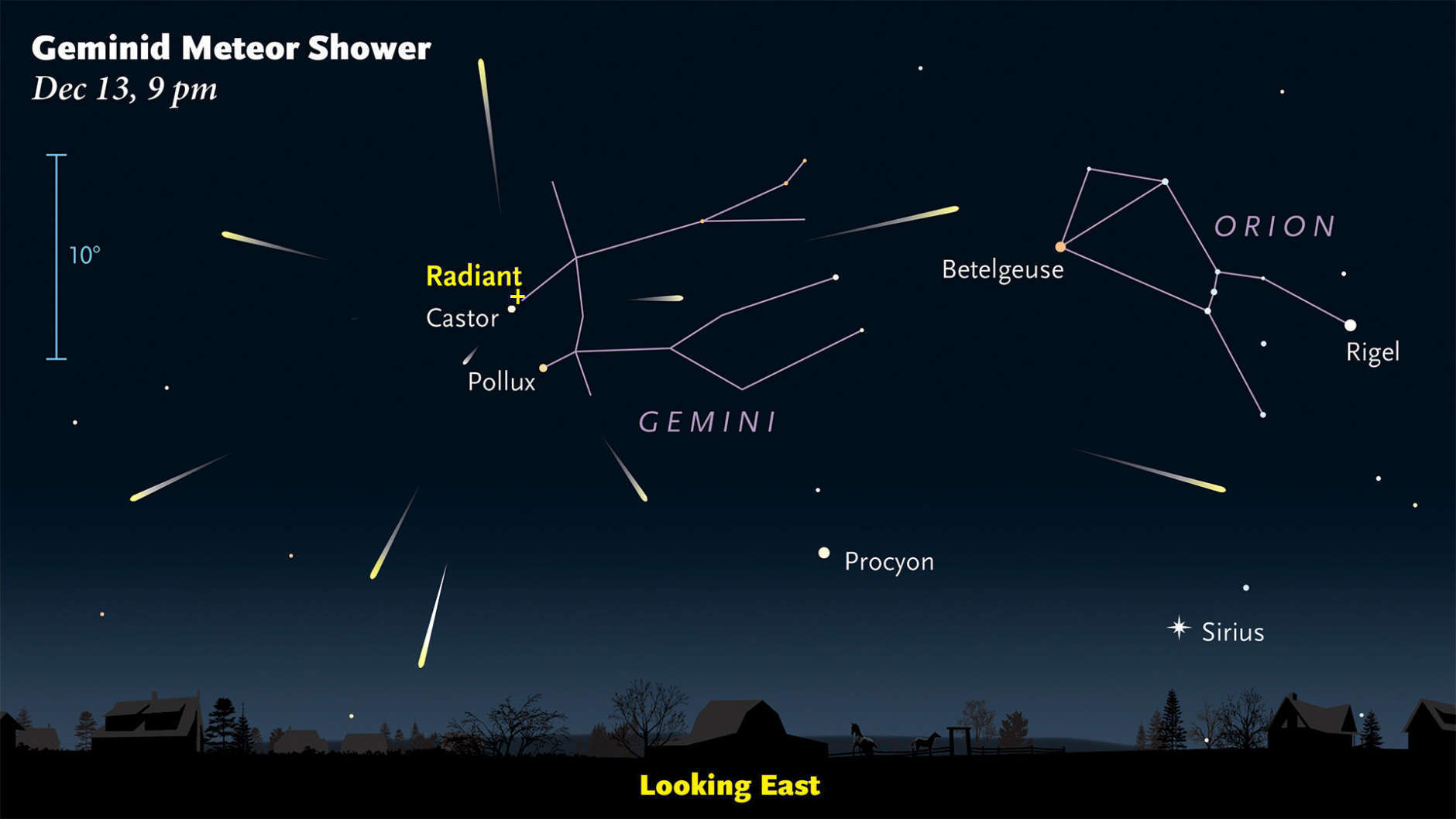
It’s odd that the Geminids are divided up by mass. This implies that the fainter and less brilliant Geminid meteors will be seen initially, with the brighter and heavier ones being seen at the peak.
The waning moon is a potential hazard to visibility. Because six days after the full moon, on December 13-14, the moon will greatly shine in the constellation Pisces, where 3200 Phaethon is currently located.
Put down your phone. Because for a few minutes at least, your night vision will be impaired by the glow of your screen. Allow your eyes twenty to thirty minutes to adjust to the low light levels.
Interesting aspects about the Geminids
In the Northern Hemisphere, the Geminids provide the most visible meteor shower of the year. In addition to being the brightest, the Geminid meteors may also be seen in a variety of colors.
Even though they are not coming from the constellation of Gemini, these meteors are still known as Geminids.

The widely accepted hypotheses place its genesis on the asteroid 3200 Phaethon. This celestial body, which is around 3.7 miles (6 km) in diameter, wasn’t discovered until 1983. It makes repeated passes around Earth’s orbit, leaving a trail of dust in its wake.
The radiant, or point of emission, for the Geminids is located very near the star Castor (the second-brightest object in the Gemini constellation), but of course, it is not the source of the Geminids.
The Geminid meteors travel at a speed of 22 miles (35 km) per second when they enter the atmosphere. To put it in perspective, it’s around one 100 times quicker than a bullet fired from a handgun. It’s interesting that this is merely a middling speed for meteors.
| Name: | Geminids |
|---|---|
| Type: | Meteor Shower |
| Origin: | Asteroid 3200 Phaethon |
| Period: | 04-20 December 2022 |
| Maximum: | 14 December 2022, approx. 2 pm CET, 1 pm UTC |
| Shooting stars per hour: | 150 (in perfect conditions) |
| Radian: | Constellation Gemini |
The FAQ about the Geminids
The Geminids—what are they?
Each year, the sky is lit up by a shower of meteors known as the Geminids.
When will you be able to view the Geminids?
Annually, between roughly December 6 and December 16, the skywatchers may get a glimpse of the Geminids.
When the Geminids will be at their maximum?
In 2022, on the 13th and 14th of December, you’ll see the most Geminids, but only at night and mostly on 1 pm UTC, December 14th.
Where is the best place to see the Geminids?
The ideal place to see the Geminids is away from any bright lights, however, they can be seen all across the planet.


